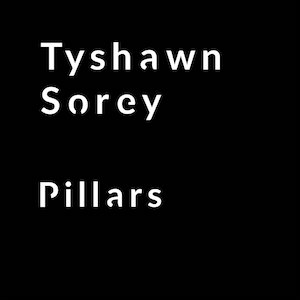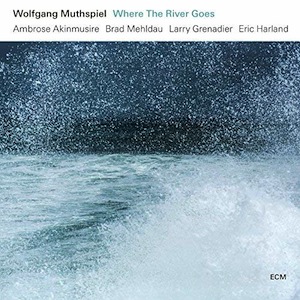Label: ECM Records, 2018
Personnel – Andrew Cyrille: drums; Wadada Leo Smith: trumpet; Bill Frisell: guitar.
Andrew Cyrille, 78, is a veteran jazz drummer that doesn’t need any kind of pyrotechnics to stand out. Instead, he instinctively hits the different parts of the drum kit with disentangled discernment, almost in a search of the perfect minimalism to rhythmically drive a tune.
On this new outing, Lebroba, he is joined by two other giants of the modern jazz scene: trumpeter Wadada Leo Smith and guitarist Bill Frisell. All three explorers contribute with compositions and there’s also an improvised number, “TGD”, signed by the collective. This piece unfolds in a crossing of spontaneous trumpet gusts, communicative distorted guitar, and refined percussive enchantment, all disturbed by electronic manipulation. Exhibiting an analogous posture in terms of abstraction of sound and unprompted communication is Wadada’s 17-minute “Turiya: Alice Coltrane/Meditations and Dreams: Love”. It’s definitely a ‘free’, changeable, and unpredictable journey. Whether with melancholy or frisson, the trumpeter is constantly seeking new avenues to explore; conversely, Frisell’s incredible harmonic work sometimes melds with folk and blues melodies; whereas Cyrille's thoughtful tom-tom figures encompass a mix of wet and dry sounds. He’s definitely not a timekeeper but rather a time breaker and rhythm explorer.
The remaining trio of compositions is utterly melodic. Frisell’s “Worried Woman” is a charmer, displaying trumpet phrases echoed by guitar in a spiritual communion, while the drummer sounds magnificently offbeat as only the masters can do. It’s stunning how everything comes effortlessly into focus both rhythmically and melodically.
Cyrille’s 8-bar blues “Lebroba” has some melodic connotations with Mingus’ “Goodbye Pork Pie Hat” and suggests a march, which the drummer never validates overtly. The luminescent muted trumpet of Wadada, who offers plenty of long notes, combines with Frisell’s witty comping to design poetic sketches. Following the same parameters, the closing piece, "Pretty Beauty", also a product of the drummer's mind, is a sheer delight - a rubato ballad infused by plaintive chords and poignant melodicism, almost channeling John Lennon’s “Imagine” in slow-mo and having Cyrille coloring it beautifully with brushes.
Cyrille already made history in jazz, but keeps enriching his discography with great recordings and marking the scene with his grandiose presence and availability. His collaborators here are equally outstanding.
Grade A+
Favorite Tracks:
01 - Worried Woman ► 03 - Lebroba ► 05 - Pretty Beauty








































